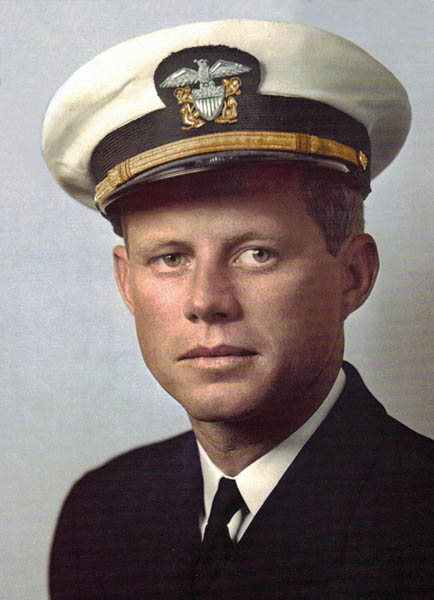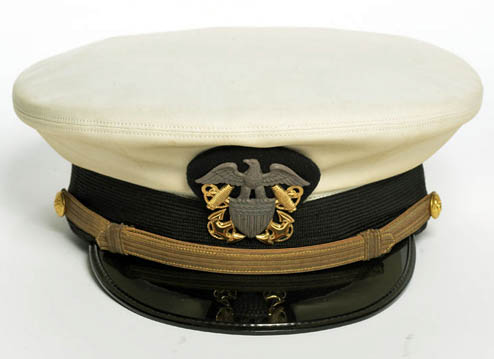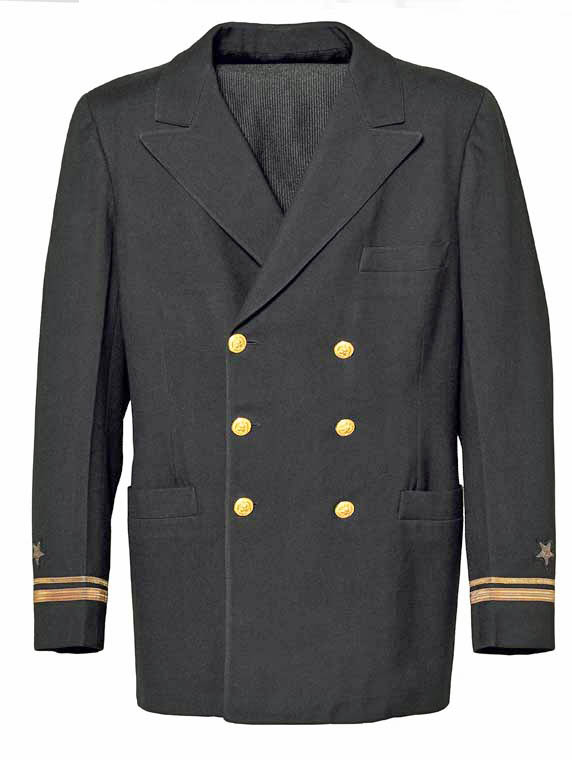
The United States Navy has been very conservative with respect to its traditions and particularly conservative with its uniforms. On the eve of the Second World War officers were still wearing frock coats with epaulettes and cocked (fore and aft) hats, recalling the days of sail. However, on March 17, 1919 with Change No. 27 to the 1913 Naval Uniform Regulations, the Navy introduced a new blue service coat with a lapel or turned down, rolling collar. The basic design was that of a modern business suit. In this regard the Navy introduced its lapel coat before the Army. As so often was the case this coat was similar to one being worn by the British Navy. It was double breasted with two rows of three buttons.

| 
|
The headgear worn with the coat was a visor hat. In the front was a hat badge displaying a shield over crossed anchors and surmounted by the American eagle facing to the left. The direction that the eagle faced was changed to the left or heraldic side of honor in 1941 on both buttons and hat badges. The visor hats of admirals had two rows of embroidered oak leaves on the visor. The hats were manufactured such that the covers were removable and might be changed to blue, white, aviation green or gray to match the uniform worn at the time.